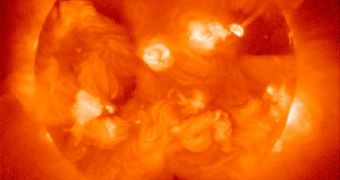Astronomers may need to recalculate the age of our solar system, new scientific measurements show. According to some experts, it may be that a trusted equation, which is regularly used in calculations on such issues, may have made an assumption that is not entirely true. The new calculations are likely to lead to a new age for our solar system, but experts doubt that the new value will be considerably different from the one that is generally accepted at this point, Wired reports.
In the equation, astronomers have always assumed that certain types of uranium always appear in meteorites in the same relative quantities. However, modern measurement techniques begin to show that this is not the case. “Since the 1950s, or even before that, no one had been able to detect any differences. Now we’re able to measure slight differences,” Arizona State University (ASU) expert Gregory Brennecka explains. He is also the coauthor of a new paper detailing the findings, which appears in the December 31 online issue of the top journal Science.
Preliminary calculations on the new age of the solar system show that the difference between the first and the new values is of about one million years. This is a blink of an eye at a geological scale, considering that the solar system appeared some 4.567 billion years ago. The new equation puts the age at 4.566 billion years, but planetary scientists and astronomers say that the difference is important for understanding the earliest days of the Sun. New information on planetary formation may also become available with the new data, experts believe.
“The building blocks of planets all formed within the span of 10 million years at most. When you start to try to unravel the sequence of events within that 10 million years, it becomes important to resolve the time scales within a million years or less,” ASU expert Meenakshi Wadhwa, also a coauthor of the Science paper, says. Experts also add that the new calculations lend further credence to the idea that a supernova exploded nearby shortly before our solar system was born. This explosion might have contributed many of the heavy elements that the planets around us now contain.
“It’s not as if this age dating process doesn’t work anymore. But if you want to push this isotope system to get ages that are really precise, suddenly we realize that there’s this variation you need to take into account,” ASU scientist Ariel Anbar, also a coauthor of the study, adds. The study is “an important step forward. There have been so many unsuccessful experiments in the past, but this one succeeded. I think it will be an important piece of the puzzle,” University of Chicago expert Andrew Davis, who has not been involved in the new work, concludes.

 14 DAY TRIAL //
14 DAY TRIAL //